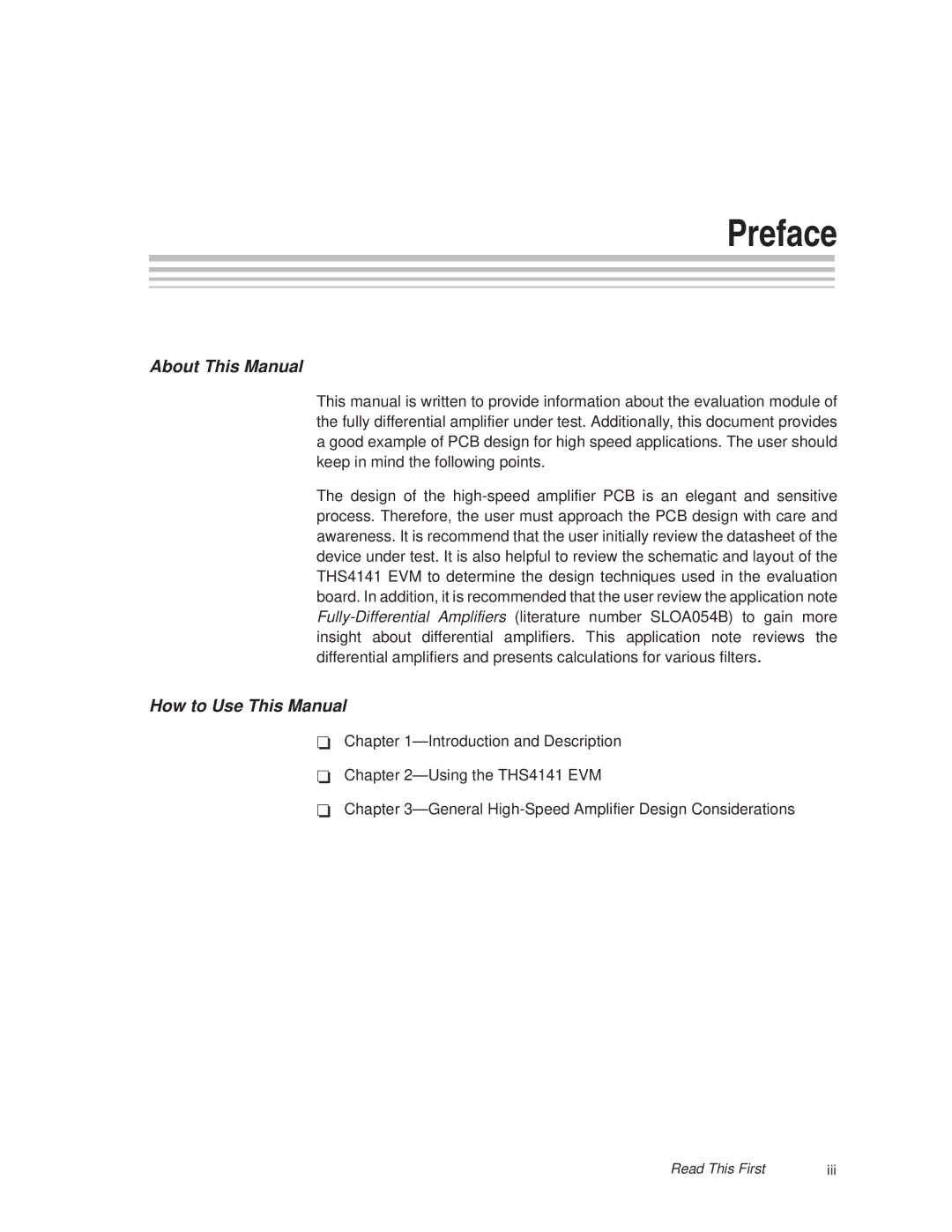THS4141 specifications
The Texas Instruments THS4141 is a high-performance, broadband operational amplifier that is particularly well-suited for applications requiring high speed and precision. As a member of the THS family, this device is optimized for driving high-capacitance loads and is frequently utilized in communications, signal processing, and data acquisition systems. The THS4141 stands out due to its impressive specifications and advanced technologies.One of the most significant features of the THS4141 is its high bandwidth. With a gain-bandwidth product of approximately 100 MHz, the amplifier can provide high fidelity signal amplification across a wide frequency range, making it ideal for high-speed applications. Additionally, it supports a slew rate of up to 2000 V/μs, which ensures fast response times to rapidly changing input signals. This characteristic is crucial for minimizing distortion in high-frequency scenarios where signal integrity is paramount.
The device operates from a wide supply voltage range of ±2.5V to ±15V, allowing flexibility in design configurations and making it suitable for both single-supply and dual-supply operation. This versatility enables designers to integrate the THS4141 seamlessly into various systems, enhancing design efficiency.
Another key characteristic of the THS4141 is its low input noise, which ensures that it can amplify weak signals without introducing significant distortion or interference. The low noise performance is critical in applications where signal clarity is essential, such as in medical imaging or precision measurement environments.
In terms of technology, the THS4141 employs advanced biCMOS processes that combine the benefits of both bipolar and CMOS technologies. This hybrid approach delivers exceptional performance through improved dynamic range and thermal stability while maintaining low power consumption.
The THS4141 is also designed to drive capacitive loads effectively, making it ideal for use in applications involving filters or transmission lines. Its output stage can handle loads of up to 1000 pF without significant instability, ensuring reliable performance in real-world conditions.
Overall, the Texas Instruments THS4141 operational amplifier is a versatile and high-performance device that excels in high-speed processing and precision applications. Its advanced features, including high bandwidth, low noise, flexible supply voltage, and stability with capacitive loads, make it a valuable component in modern electronic design, catering to the demands of innovative engineering challenges.
